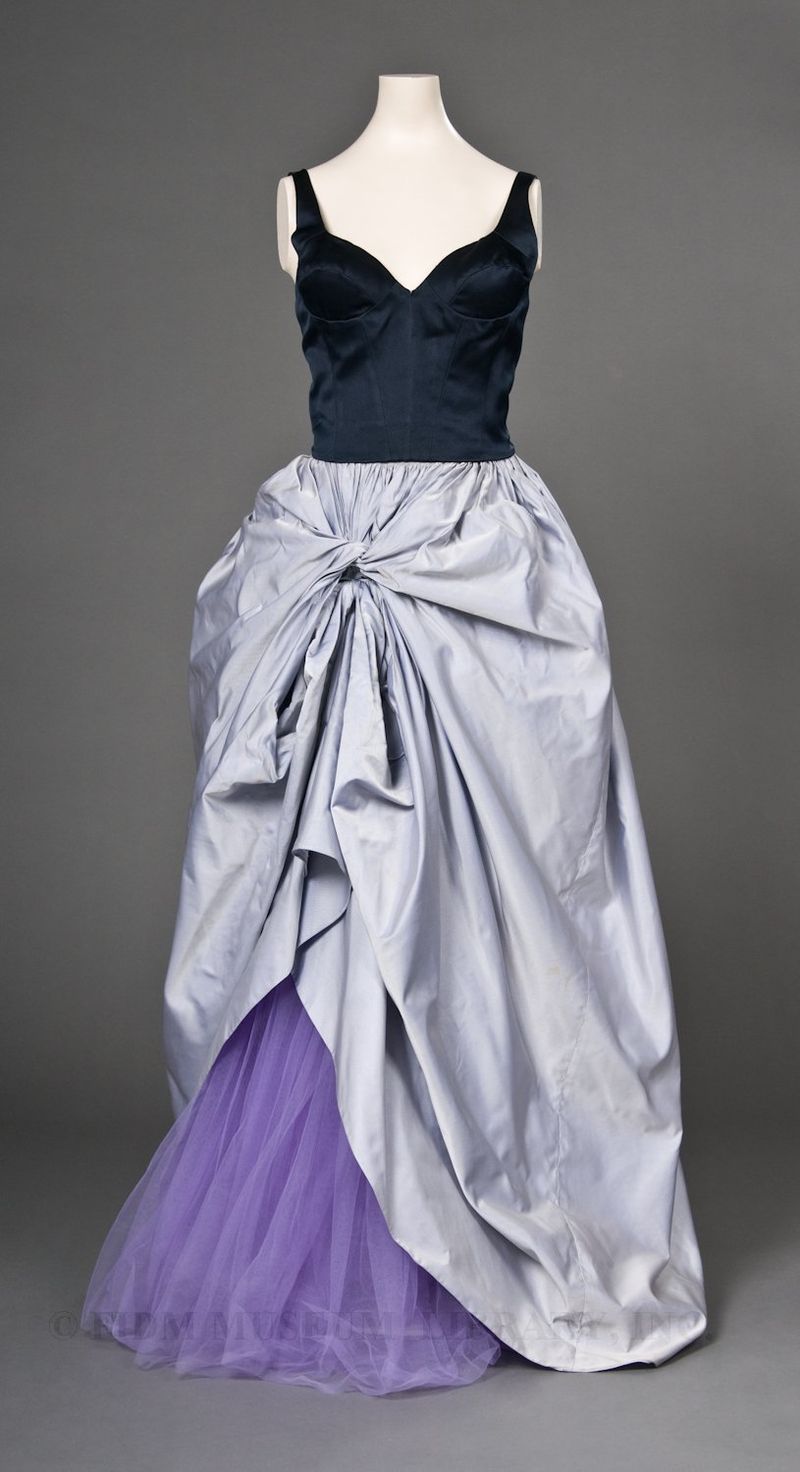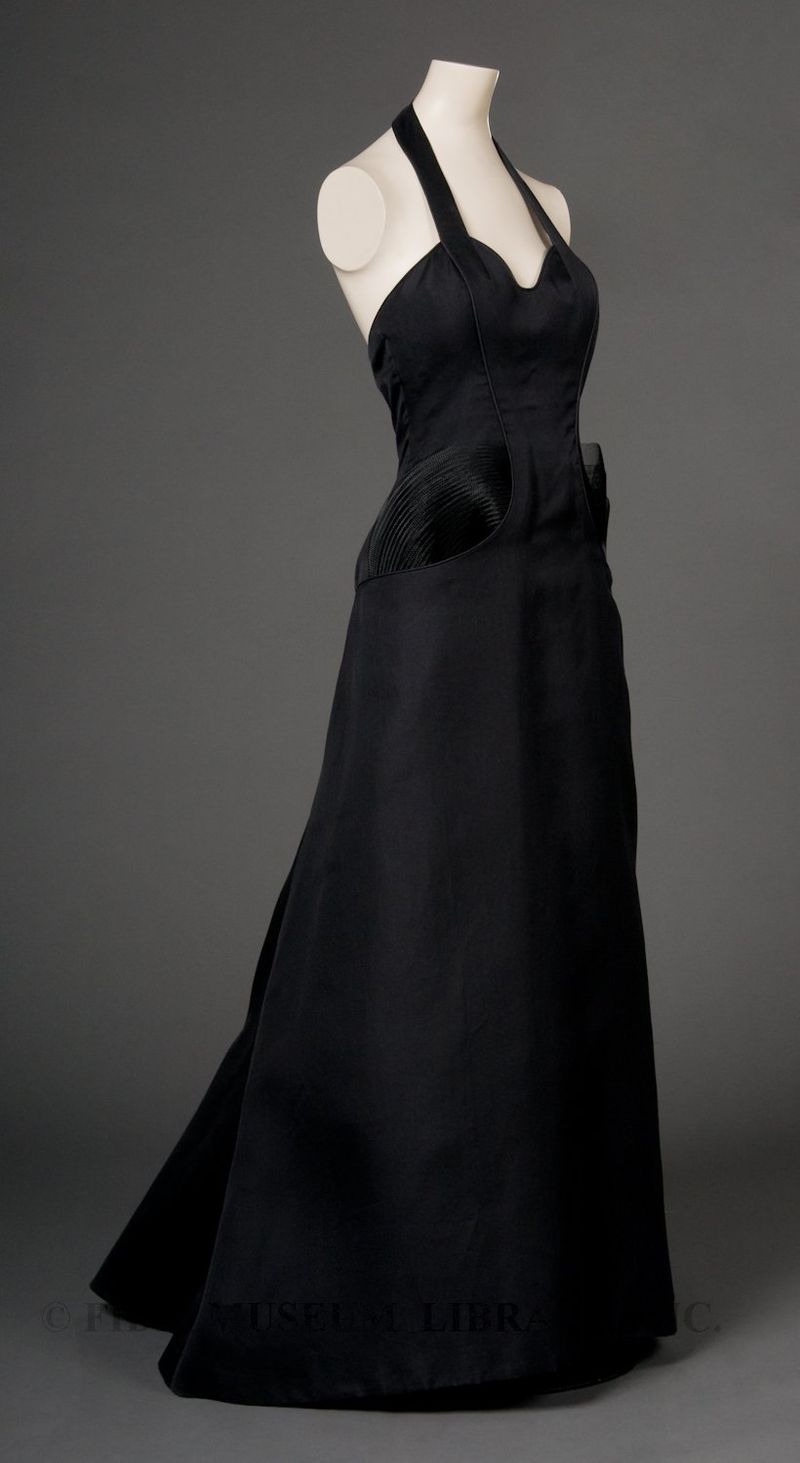Even before launching her own line in 1981, Carolina Herrera (b. 1939) had established a reputation for elegance and personal style. As an adolescent, she sometimes accompanied her grandmother on haute couture buying trips to Paris. When at home in Caracas, Venezuela, Herrera designed her own clothing, which was then brought to life by a skilled seamstress. Herrera's ability to combine purchased garments with those she designed herself earned her multiple nominations to the International Best Dressed list, along with compliments from friends and acquaintances. In 1980, Herrera was interested in launching a line of textile designs, but a meeting with Diana Vreeland convinced her to go into fashion. Herrera already had numerous friends in the fashion industry, and with the help of Bill Blass, Mary McFadden, model Iman and other notables, in 1981 she presented her first collection at the Metropolitan Club in New York City.
Carolina Herrera
c. 1992
Gift of Carolina Herrera
2005.844.12AB
Though Herrera also designs daywear, elegant and restrained evening gowns are her trademark creations. Silhouettes are typically a sleek column or a full skirt with fitted bodice, as seen in the deep navy and purple satin evening gown pictured above. Herrera's evening wear usually shuns pattern, with visual interest created through fabric texture, color or surface embellishment. When questioned about her affinity for evening wear during an interview
early in her career, Herrera's response was simple: "I love the glamour
and sophistication of evening especially."1
Herrera's unfussy evening gowns adhere to the less-is-more school of
design. To avoid overwhelming the wearer, each gown typically has a single focal point. Some of Herrera's earliest designs featured large, puffed sleeves paired with a relatively simple, unadorned gown. Her fondness for this particular emphasis earned Herrera the nickname, "Lady of the Sleeves." In the case of the black silk gazar gown pictured below, an unusual faux pocket at the hip catches the eye. The stand-up woven mesh accent suggests the sophisticated suits of the 1930s, which often featured unusual and eye-catching pocket treatments. The low, scooped back and slight fishtail hem also evoke the 1930s, a decade synonymous with glamourous evening wear.
Carolina Herrera
c. 1994
Gift of Carolina Herrera
2005.844.8
Herrera's best marketing tool is her own status as a member of the international elite. As an influential member of the world she designs for, Herrera understands the needs of her clientele. In fact, many of Herrera's first clients were friends and acquaintances drawn from her world of celebrity and influence. Herrera's awareness of her customers' boundaries has resulted in the criticism that her work is tasteful, verging on conservative. Looked at from another perspective, perhaps Herrera believes that a dress should always be noticed after the wearer. If so, this might account for Herrera's recent popularity as designer of red-carpet wear for celebrities like Sarah Jessica Parker and Renee Zellweger. For those who adhere to old-school notions of Hollywood glamour, Herrera's sophisticated, yet simple, aesthetic might be just the thing.
1 Diamonstein, Barbaralee. Fashion: The Inside Story New York: Rizzoli. 1985: 91.




